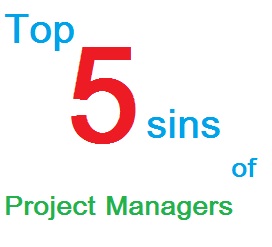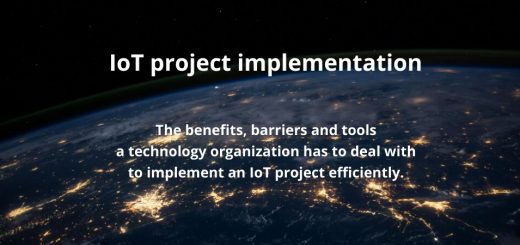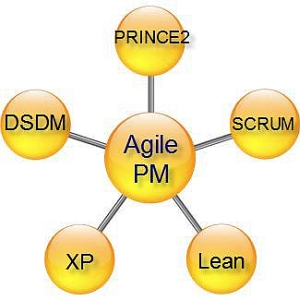Integrating GenAI in Project Management Workflows: the Gap Between Vision and Execution

There’s a peculiar disconnect happening in project management right now. While 70% of project managers have woven AI into their daily routines, PwC’s research suggests that by 2030, generative artificial intelligence (GenAI) will handle 80% of what we currently consider standard project management work. That’s quite a leap from today’s reality to tomorrow’s prediction.
What makes this particularly interesting is the confidence gap. We’ve got 91% of project professionals believing GenAI will impact their work significantly, yet only 21% are using AI-powered tools in more than half their project initiatives. Something’s not adding up here.
This disparity points to a leadership challenge that many organizations are grappling with. The executives driving generative AI adoption decisions often lack the practical experience to bridge the gap between strategic vision and operational implementation. It’s perhaps why we’re seeing increased interest in advanced leadership education as programs like an Ed.D in organizational leadership are attracting more project managers who recognize that integrating GenAI requires deeper understanding of change management, organizational behavior, and strategic decision-making than traditional project management training provides.
The CRM AI Takeover
Let’s start with what’s actually happening across industries. Manufacturing leads the charge with 78% adoption rates, followed closely by financial services at 77%. Aerospace, defense, healthcare, and pharmaceuticals each report 75% integration. None of these numbers are arbitrary but they illustrate the approach to digital transformation based largely on regulatory frameworks, level of complexity of the operations, etc.
The momentum of these numbers tells another part of the story. We have moved far beyond the testing phase, where organizations were analyzing the integration of generative AI. When 93% of project managers state they receive measurable ROI from their AI tools, we are not discussing hypothetical business value for pilot program purposes.
But here’s where it gets interesting. Despite this widespread adoption, there’s still a significant implementation gap. The 70% who’ve integrated AI into everyday processes versus the 21% using GenAI extensively suggests many organizations are taking measured approaches rather than diving headfirst into advanced AI applications.
This cautious progression makes sense. You don’t overhaul entire project management workflows overnight, especially when you’re dealing with client deliverables and tight deadlines. Instead, teams are starting with administrative automation and gradually expanding into more sophisticated applications as they build confidence and capability.
The confidence levels certainly support more aggressive adoption. When 58% of professionals predict AI’s influence will be “major” or “transformative,” that’s not casual optimism. That’s actually an informed expectation based on early results.
From Spreadsheets to Success Stories
The abstract statistics become much more compelling when you examine specific organizational outcomes. China State Construction achieved an 18% reduction in rework by implementing AI-powered quality control systems that catch design specification deviations in real-time. That’s not theoretical efficiency because they were able to save money and protect project timelines.
Fluor Corporation saw their labor productivity jump 12% through AI workforce optimization. Consider what that looks like in practice: smarter skill matching, optimal scheduling, and sending workers and resources to the right place at the right time for maximum impact. These are not marginal gains – they’re massive improvements to the whole process.
Cost management has also yielded similarly strong outcomes. Acciona reported a 15% reduction in budget overruns by applying AI to surface early indicators that costs may soon be out of control. Bechtel was able to show a 10% reduction in cost through AI-driven resource allocation, while Turner Construction reported a 12% reduction in project overrun by implementing early-warning risk mitigation systems.
Perhaps the most surprising is the safety-related outcomes. Bouygues Construction reported a 22% reduction in accident rates by analyzing safety-related data to identify risk patterns in the data so that actionable recommendations could be made. This wasn’t an expected outcome when they started their AI integration. It emerged as teams began connecting data points in ways manual analysis couldn’t match.
Team application areas that have the greatest impact correlate to the natural strengths of AI. In order of most significant impact, performance analysis is number one at 28%, data analysis number two at 26%, and administrative tasks three at 25%.
What I find even more impressive is the impact on the speed of decision-making with GenAI integration. Many teams are reporting they can now mold a response to earlier project modifications, catch potential issues sooner, and have higher accuracy in forecasting the need for resources. The technology does particularly well of parsing through tons of project data to identify patterns and outliers that would take human analysts a considerably longer time to identify.
Coupled with business intelligence tools like Power BI and Tableau, the team now has real-time project monitoring capabilities that completely change their ability to track actual project progress and modify based on tracking and inputs. Instead of waiting for weekly status meetings to identify problems, project managers receive immediate alerts when metrics suggest potential issues.
The Great Project Management Exodus
Now we reach the provocative question: what happens when 80% of current project management work disappears? PwC’s prediction isn’t suggesting project managers become obsolete; rather, it’s pointing toward a fundamental shift in what project management actually entails.
The market projections support this transformation. Growing from £2 billion to £4.5 billion in five years indicates robust investment in AI-powered project management tools, suggesting organizations view this as essential infrastructure rather than optional enhancement.
But there’s a critical implementation reality to consider. Despite high adoption rates and strong ROI reports, significant barriers remain. Organizations cite initial investment costs, skill requirements, resistance to change, and ethical considerations as primary obstacles. The gap between belief in AI’s impact and actual generative GenAI usage reflects these practical constraints.
Successful implementations follow structured approaches: business objective alignment, infrastructure assessment, data governance establishment, and workforce upskilling investment. The organizations achieving the best results treat AI integration as a strategic initiative rather than a technology deployment.
This raises important questions about workforce evolution. As AI assumes routine tasks like data collection, tracking, and basic reporting, project managers need different competencies. The emerging skill set includes AI tool management, data interpretation, strategic decision-making, and translating AI-generated insights into actionable plans.
The change offers a curious contradiction. While AI removes standard project management tasks, it has paradoxically also made the role much more strategic. Project managers with an understanding of GenAI and involved in human-AI collaboration will likely find their role strengthened, not threatened.
There is increasing competitive pressure on organizations that have not begun the integration. When your competitors can deliver projects 15% under budget with 18% less rework and 22% better safety performance, it becomes increasingly complex to make a business case against generative AI integration.
What AI integration Actually Means
With a 70% rate of TF adoption and 93% of organizations reporting an ROI of some kind, incorporating AI into project management is now standard practice as opposed to a competitive advantage.
However, perhaps the most important finding is not represented in the statistics. Successful integrations have not replaced human judgment with algorithmic decision-making. They have enhanced human judgment with processing power, meaning more informed decisions can be made.
Organizations achieving the strongest results view GenAI as a catalyst for project management evolution rather than a replacement for established practices. They’re using technology to eliminate routine work so their teams can focus on strategic thinking, stakeholder management, and complex problem-solving.
The window for reactive adoption is narrowing. As the market moves toward £4.5 billion and workflows evolve toward PwC’s 2030 vision, the question shifts from whether to integrate artificial intelligence and project education to how quickly you can do it effectively. The data supports urgency, but it also suggests that thoughtful implementation matters more than rushed deployment.














